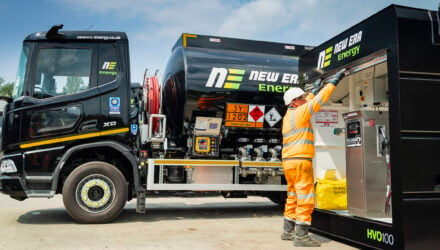
DAMAGE: The dreaded D word causes fleet havoc
In this week’s Guest Blog, www.vehicleleasingadvice.co.uk – Compass Contract Hire’s new leasing advice site – provides a Motor Mistress guide on how to ensure your fleet car is not stung by unexpected lease car damage bills.
Something that any car owner will always have to shell out for is the D word.
We all know about depreciation but there is also another D word.
You’ve guessed it: damage.
If you damage your car during the time that you are running it – whether you own, lease, or finance it – you will have to pay one way or another.
Let’s face it; if you own it, you are unlikely to sell it on at a premium if there is damage present.
If you do decide to sell it without first repairing it, you will expect to take a knock.
Most car sellers will rectify any damage problems before putting the vehicle on sale to make sure that they achieve the maximum amount from their prospective buyer.
It’s exactly the same with a lease car.
Of course, leasing companies don’t expect a car with 90,000 miles to come back ‘as new’.
Your car will inevitably take on elements of wear and tear just from your day-to-day usage.
With this in mind, it is important to realise the difference between damage and fair wear and tear.
And, obviously, if there is any damage, it’s a good idea to get it sorted out before you return your car.
Most leasing companies are members of the British Vehicle Rental and Leasing Association (BVRLA) and as such, operate within its code of conduct; this membership assures consumers that any end of contract charges will be fair and reasonable.
If damage is indeed present, the lease company can either prepare the vehicle back to an acceptable standard for sale, or sell it on with the damage still present – and therefore take a ‘hit’ on the price that they expect to achieve, say, at auction.
The charges that you will receive if your vehicle is damaged when it is returned to them will go towards covering these costs.
There are also other elements that will devalue the vehicle if not considered, which all derive from neglect.
If you don’t look after your car properly – i.e. by not servicing it in accordance with the manufacturer’s guidelines, not cleaning it and/or maintaining your car, or by damaging/losing any equipment – this will also have an impact on the vehicle’s value when it is returned.
Although there are clear guidelines as to what is and is not acceptable, the best form of protecting yourself from any unforeseen bills is, of course, to avoid them in the first place.
Here are some handy tips to get you planning your vehicle’s return in advance and to help you make sure that any wear or tear that may be present will actually be classed as fair:
– Firstly, always look after your lease car. This may be an obvious one, but treat it like you own it yourself; clean it regularly, make sure the services are carried out in a timely fashion and keep all items like spare keys and handbooks safe
– Take a good look around your vehicle some time before it is due back – the BVRLA recommend 10-12 weeks prior to its return. Carry out your own impartial appraisal, remembering to inspect all panels, roof, bonnet, doors and of course, the interior – make sure that you don’t forget the windows and mirrors
– Get a friend or family member to help you with your appraisal and be sure to tell them that you want an unbiased opinion!
– This may again seem obvious, but always inspect your car in good light and make sure it is clean and dry – try to take photographs of any areas of concern, especially if you aren’t sure if they are classed as damage. This way, you can query it with your leasing company and rectify the problem area(s) if need be in plenty of time
– Don’t forget to check underneath the vehicle and take a look from the side – dents can often be spotted in different lights and viewpoints that you could have missed when walking around
– Remember to check the wear on your tyres and make sure that there is no tyre damage – don’t forget the alloy wheel/s themselves or the wheel trim/s
– Check the interior thoroughly as any lingering odours, rips, burns and stains are chargeable
– Double check that all of the equipment inside the car is fully functional and that everything that came with the car is present
– Finally, make sure that you know what is chargeable and what isn’t and make sure that both your vehicle and yourself are fully prepared for the collection date
In our next Potential Leasing Pitfalls blog, we will be covering what is and what is not acceptable and providing you with some damage rectification hints and tips that could save you money if you do need to refurbish your car back to the required standard.
What I will say is that in 18years, I have never had a damage bill.
I have also only refurbished my car prior to handing it back on a couple of occasions when there has been minor damage – it is simply not true that leasing companies are there to ‘sting’ you when the car goes back.
They’re not allowed and anyway, so many people would object to paying them if charges were unreasonable, it just wouldn’t be worth their while.
In summary, like I said earlier, if you look after your car and treat it like your own, you are very unlikely to have a problem.






